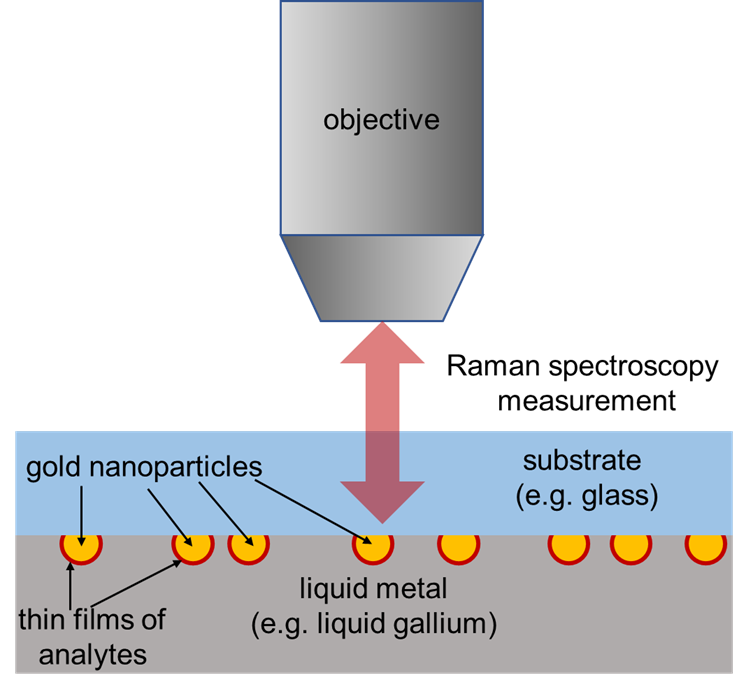Easily Produced Nanoscale Hot Spots for More Sensitive Raman Scattering Using Liquid Metal Structures
A novel nanophotonic sensor that enhances Raman scattering signals by several orders of magnitude by creating nanoscale hot spots formed by liquid metal.
Analytes in the hot spots of such nanophotonic sensors will experience drastically enhanced interactions with the incident light, and therefore produce much more optical sensing signals. In general, the smaller the hotspots, the stronger the light-analyte interactions. However, it is difficult and costly to fabricate nanophotonic structures with nanoscale hotspots; and it is difficult and time-consuming for the analytes to enter the nanoscale hot spots through random diffusion process in a liquid medium.
To fundamentally overcome the drawbacks of the conventional nanophotonic sensors, University at Buffalo inventors invented a new nanophotonic sensor architecture which employs liquid-metal-based nanophotonic structures to form nanoscale hot spots. This innovative device architecture allows the analyte to be delivered in place before the nanoscale hot spots are formed by the liquid metal, hence achieving not only hot spots with high light confinement and enhancement, but also highly efficient delivery of analytes into hot spots.

- Better sensing performance
- Higher Sensitivity
- More cost-effective
- More user-friendly
- More suitable for point-of-care applications than the competing conventional nanophotonic sensors
The major application is biosensing. The target analyses introduced onto the sensor chip can also be functioned with bio-recognition elements such as specific antibodies to selectively capture specific biomarkers.
PCT/US2023/073691 filed 9/7/2023.
TRL6
Available for license or collaboration.
Patent Information:
| App Type |
Country |
Serial No. |
Patent No. |
Patent Status |
File Date |
Issued Date |
Expire Date |
|